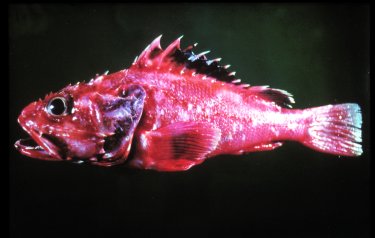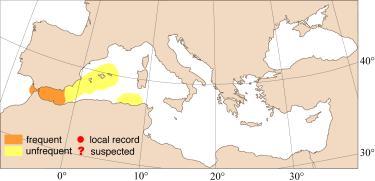
|
Relevant synonyms
Misidentification
Meristic formula
* Note: Goode and Bean (1896) separated the western Atlantic population from the eastern Atlantic population, designating the western population as a subspecies, T. cristulata cristulata and T. cristulata echinata for the eastern Atlantic population. Some authors (e.g. Maurin, 1962) elevated the eastern population to a specific level, while other authors ignored the division for subspecies. |
|
| photo : Inaki Franco |
|
SHORT
DESCRIPTION
color :
red, with dusky pigment on the back and the sides and black shaded areas on the fins (between spines 5 and 11 of dorsal fin) and the operculum. Black peritoneum.
size :
common 15 - 45 cm (max. 55 cm). |
DISTINGUISHING CHARACTERISTICS
BIOLOGY / ECOLOGY
habitat :
benthic on muddy or sandy substrates, between 200 and 2500 m. |
|
1st
MEDITERRANEAN RECORD
|

|
|
DISTRIBUTION
|
ESTABLISHMENT SUCCESS
speculated reasons for success :
|
|
|
MODE OF
INTRODUCTION |
IMPORTANCE TO
HUMANS |
|
KEY
REFERENCES
|
|
 Scorpaena echinata*
Scorpaena echinata*